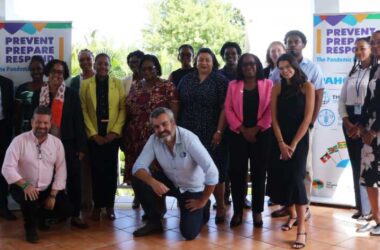For the past 32 years, the World Health Organization (WHO) has sponsored this annual awareness day, intended to bring attention to the health risks associated with tobacco use, as well as to advocate for governments to adopt effective policies to reduce smoking and the use of other tobacco products. Tobacco products include cigarettes, cigars, snuff, bidis – all of which are harmful to human health. The campaign intends for 24 hours of abstinence from all forms of tobacco consumption around the world on May 31st.
The focus of World No Tobacco Day 2019 was no different. It brought attention to the negative impact that tobacco has on one’s lung health, whether in smokers or persons exposed to second hand smoke. The facts about tobacco remain:
- Tobacco kills more than 7 million people around the world each year, mostly persons from developing countries like St. Lucia.
- Almost 1 million of these deaths are in non-smokers.
- Half of all long-term smokers will die from a tobacco-caused disease, losing about 1- 15 years of life.
- Each cigarette smoked is estimated to shorten life by, on average, 11 minutes.
- Tobacco use is the single most preventable cause of death in the world today.
- Tobacco is the only legal consumer product that kills up to half of its users when used exactly as intended by the manufacturer.
- Tobacco costs the global economy $200 billion USD every year.
Tobacco smoke contains more than fifty chemicals known to cause cancer. Nicotine, one substance contained in all tobacco products, is highly addictive. Tobacco use leads to diseases affecting the heart, liver and lungs. Our lungs are invaluable – they are central to good health and well being in all persons. Smoking impacts lung health from chronic respiratory diseases (COPD) to cancer.
Tobacco smoking is a major risk factor for almost all non-communicable, chronic diseases (NCDs), including hypertension, diabetes, obesity, asthma and cancer. The effect depends significantly on how long and how much a person smokes. Pregnant women, their unborn babies and young vulnerable children are not spared the effects of tobacco.
The youth, who are most vulnerable, are at an increased risk of becoming addicted to tobacco and of feeling the negative long-term impacts of using it. In recent times, tobacco companies have developed and are pedaling a new type of product to young people, like e-cigarettes, some of which still contain tobacco that is heated with vapor. The health effects of these products are still largely unknown.
In St Lucia 26.7 percent of students between the ages of 13 -15yrs admitted to ever smoking tobacco, with boys comprising 33.4 percent and girls 19.6 percent (Global Youth Tobacco Survey).
Saint Lucia has ratified the WHO Framework Convention on Tobacco Control. We now need to enact legislation and comply. We have pictorial warning labeling on cigarette boxes.
What we need to do
- Make avoidance and cessation of tobacco use a major priority.
- Increase excise tobacco taxes to the recommended 66% and use that revenue to fund NCD control.
- Ban advertisements and promotions of all tobacco products.
- Advocate for legislation for smoke-free indoor spaces.
- Advocate for regulations and legislation to avoid environmental tobacco smoke (secondhand smoke).
- Engage civil society to assist with educational programmes and activities for prevention and cessation of tobacco use.
Many effects of tobacco use, unfortunately not all, can be reversed when we stop smoking. It’s time to stop smoking & start breathing.














